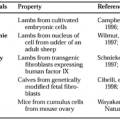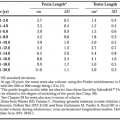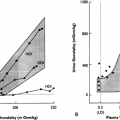DEFINITIONS
Diabetes insipidus refers to the passage of copious volumes of dilute urine and is synonymous with polyuria. In adults, the urine volume exceeds 2.5 L per 24 hours (>40 mL/kg per 24 hours), while in children the output is greater (>100 mL/kg per 24 hours).
Three pathophysiologic conditions result in diabetes insipidus. An absolute or partial deficiency of vasopressin secretion from the neurohypophysis in response to normal osmotic stimulation is termed hypothalamic diabetes insipidus. This disorder is also known as cranial, central, or neurogenic diabetes insipidus. Patients with hypothalamic diabetes insipidus generally have
normal thirst sensation. Their basic abnormality is insufficient circulating antidiuretic activity, which is the principal, but not the sole, cause of their polyuria. Diabetes insipidus secondary to decreased renal sensitivity to the antidiuretic effect of vasopressin circulating in normal or high concentrations is usually called nephrogenic diabetes insipidus. Again, these patients rely on normal thirst sensation to regulate water balance. The third mechanism leading to diabetes insipidus is the ingestion of excessive volumes of fluid, which results in suppression of vasopressin release and consequent polyuria. This condition is referred to as dipsogenic diabetes insipidus, sometimes termed primary polydipsia.
normal thirst sensation. Their basic abnormality is insufficient circulating antidiuretic activity, which is the principal, but not the sole, cause of their polyuria. Diabetes insipidus secondary to decreased renal sensitivity to the antidiuretic effect of vasopressin circulating in normal or high concentrations is usually called nephrogenic diabetes insipidus. Again, these patients rely on normal thirst sensation to regulate water balance. The third mechanism leading to diabetes insipidus is the ingestion of excessive volumes of fluid, which results in suppression of vasopressin release and consequent polyuria. This condition is referred to as dipsogenic diabetes insipidus, sometimes termed primary polydipsia.
Stay updated, free articles. Join our Telegram channel

Full access? Get Clinical Tree







